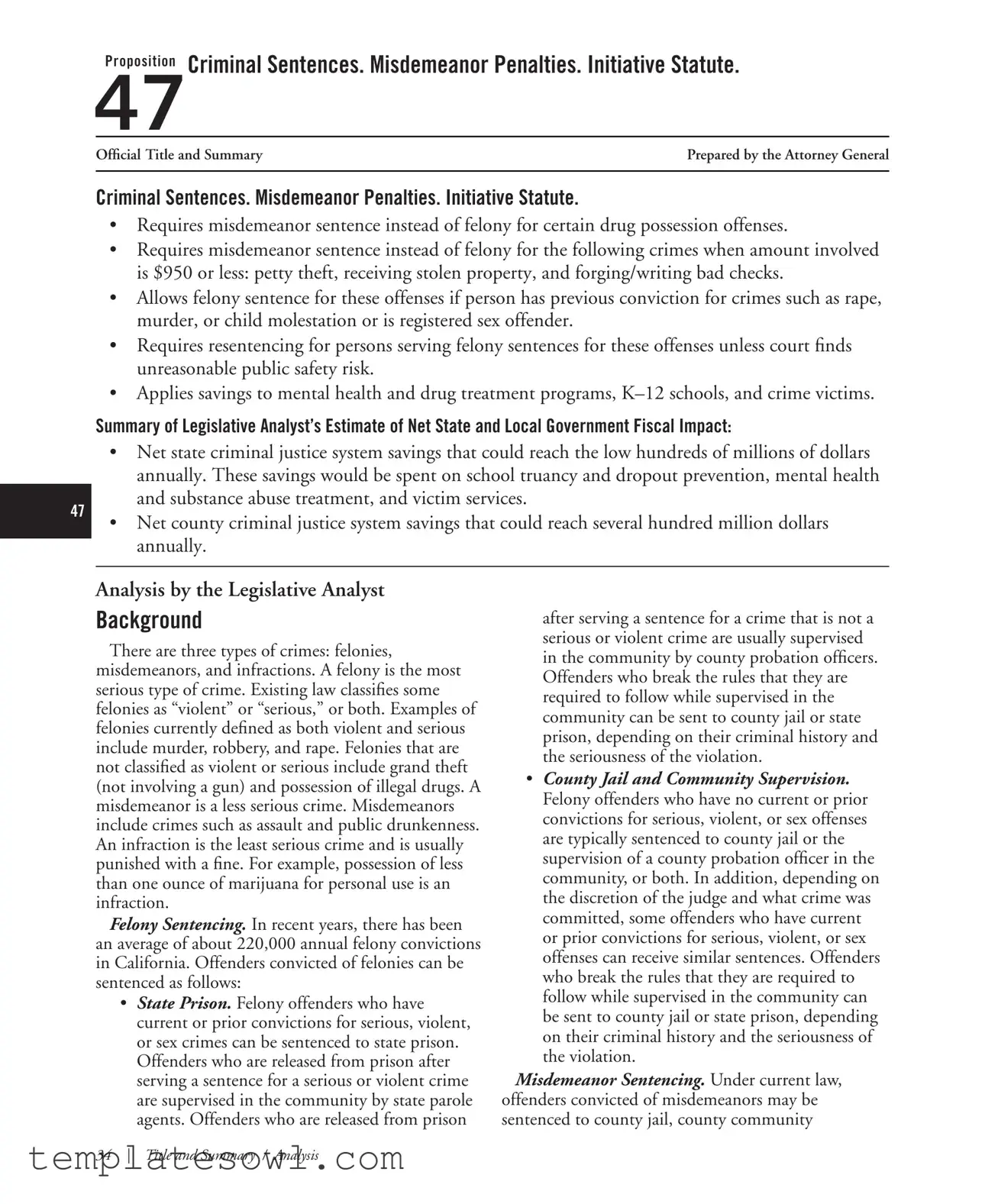What is Proposition 47?
Proposition 47, also known as the Safe Neighborhoods and Schools Act, is a law that reduces penalties for certain nonviolent and nonserious crimes in California. The measure allows for misdemeanor sentences instead of felony sentences for specific drug possessions and property crimes when the value involved is $950 or less. It also allows people currently serving felony sentences for these offenses to seek resentencing.
Which offenses are affected by Proposition 47?
Proposition 47 affects several nonserious offenses, including certain drug possession cases and property crimes like petty theft, receiving stolen property, and writing bad checks, as long as the value is $950 or less. Importantly, offenders with prior convictions for violent crimes, such as murder or rape, are excluded from these reduced penalties.
How does Proposition 47 change sentencing for existing offenses?
The measure reclassifies various crimes from felonies or wobblers to misdemeanors, leading to less severe penalties. Offenders charged with affected crimes will generally face shorter jail time and less strict community supervision. This change seeks to align sentences with the nonviolent nature of the offenses.
What are the provisions for resentencing under Proposition 47?
Individuals currently serving felony sentences for eligible offenses can file to have their sentences reduced to misdemeanors. Furthermore, those who have completed their sentence for a felony conviction that is now a misdemeanor under Proposition 47 can also apply for a change in their record. However, this option is not available to offenders convicted of designated serious crimes.
How are the savings from Proposition 47 allocated?
Proposition 47 requires that any savings generated from reduced incarceration costs be deposited into a new fund called the Safe Neighborhoods and Schools Fund. This fund's allocations include 25% for programs to reduce school truancy and dropout rates, 65% for mental health and drug treatment services, and 10% for victim services.
What fiscal impact does Proposition 47 have on state and local governments?
The implementation of Proposition 47 is projected to result in significant annual savings for both state and county justice systems, potentially reaching hundreds of millions of dollars. These savings will not only contribute to reduced jail populations but will also support essential social services aimed at preventing crime and supporting at-risk populations.
Can individuals still be sentenced to prison for offenses covered by Proposition 47?
Generally, Proposition 47 prohibits prison sentences for those whose offenses fall under its provisions, unless the individual has prior convictions for severe crimes. In such cases, a felony sentence may still apply. For the eligible offenders, they are primarily directed to serve lesser sentences within county jails or under community supervision.




